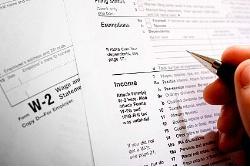Dear Drake: whether you decide that Natural Insemination (NI) or Artificial Insemination (AI) is the…
read more » Thinking of using a babysitter, or already paying a part-time nanny? Make sure you are doing it right, otherwise you might be liable for back taxes. Under current law any family or individual who employs someone they pay more than $1,800 a year is considered an employer in the eyes of the IRS and is required to pay taxes for that employee. So even if you are paying a babysitter minimal amounts each week, that money adds up and that person is considered an employee. An estimated 80% of qualified employers skip paying each year. Violators are subject to paying back taxes as well as penalties that compound annually for as long as an employer fails to fulfill their obligations.
Thinking of using a babysitter, or already paying a part-time nanny? Make sure you are doing it right, otherwise you might be liable for back taxes. Under current law any family or individual who employs someone they pay more than $1,800 a year is considered an employer in the eyes of the IRS and is required to pay taxes for that employee. So even if you are paying a babysitter minimal amounts each week, that money adds up and that person is considered an employee. An estimated 80% of qualified employers skip paying each year. Violators are subject to paying back taxes as well as penalties that compound annually for as long as an employer fails to fulfill their obligations.
CNBC detailed a 4 step process to ensure proper payment of taxes:
- If you employ someone in your home, you should establish tax accounts with the state and IRS, giving them your name and social security number—establishing yourself as an employer—and get an Employer Identification Number (EIN).
- Be sure to withhold standard payroll taxes from each paycheck you give your employee, which go toward Social Security, Medicare and federal and state income taxes. (For Social Security and Medicare, the total contribution is 15.3 percent, with the employer and employee each contributing 7.65 percent. Add in a small contribution all employers pay for unemployment taxes and a typical employer’s payroll taxes are approximately 9 percent.)
- On a quarterly basis, all employers must remit those withheld taxes to both the state and IRS.
- At year-end, you must provide a W-2 to your employee and file IRS form Schedule H with the state and federal government as part of your personal income taxes in April.
According to Care.com, a nanny making $600 per week ($15 per hour, 40 hours per week) should yield the following breakdown:
- Federal Income Tax: $75.77
- Social Security: $25.20
- Medicare: $8.70
- State Income Tax (3.7%): $22.20 (NY State)
Total Withholdings: $131.87
Employers are also required to make the following contributions:
- Federal Unemployment: $4.80
- Social Security: $37.20
- Medicare: $8.70
- State Unemployment: $24.60 (NY State)
Total Additional Payments: $75.30
So that means that your weekly child care payment amounts to $675.30 per week (base plus additional payments), while your nanny takes home $468.13 (base excluding withholdings) in net wages.






